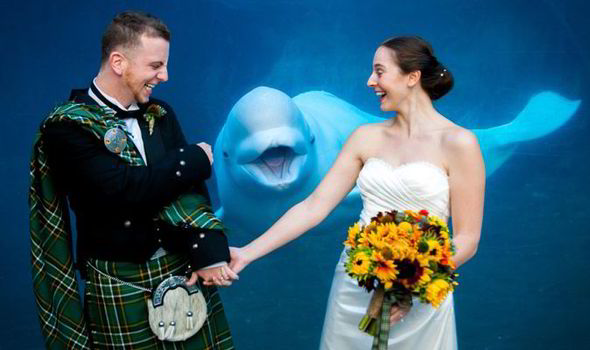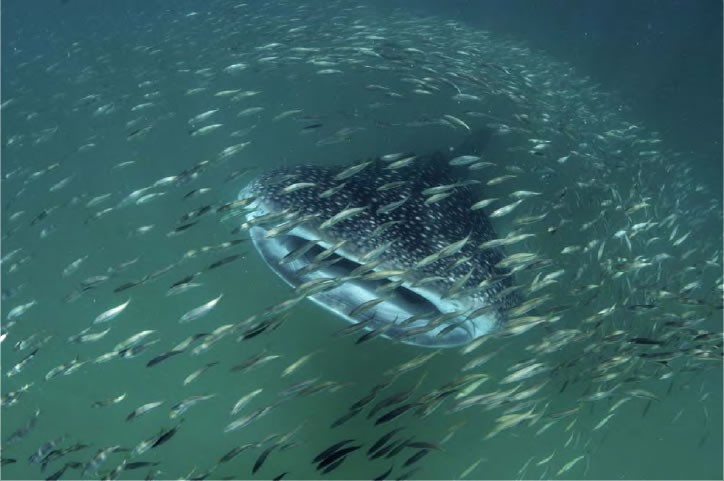If the joys of spring seem a long way off, take a trip to the Norfolk coast, where new life is bursting forth even in the depths of chilly December
Daylight increases by the length of a gnat’s yawn on December 23, a week before the calendar new year, as the sun sets out on its return journey back towards summer. For the salmon and the red deer, the new year has already begun: in our remotest streams and glens breeding takes place, and a new cycle of life begins, in the autumn. For the grey seal – the Atlantic seal of my childhood – the new year starts right now, with the birth of new pups followed almost immediately by mating.
Once there were two types of seal around Britain’s coasts – the common and the Atlantic. Times and names change: the “common” is now the least common, often referred to as the harbour seal; while the Atlantic seal has spread into the North Sea and is usually referred to as the “grey seal” – although its colour variation is huge, from almost white to black.
Three of the largest and most accessible British colonies of grey seal are now well away from the Atlantic: on the Farne Islands off the Northumberland coast, at Donna Nook (Lincolnshire) and at Blakeney Point in north Norfolk.
It was to Blakeney that Lulu and I set out a couple of weeks ago, on a day that felt as if it had been gouged from the ice of the Arctic. The achingly cold west wind brought sharp flurries of rain that stung our faces.
What a place – pure wilderness in overcrowded Britain, and a trek of more than three miles along Blakeney’s shingle spit, inhospitable on such a day – thank goodness for long johns and thermal gloves. Blakeney is a national nature reserve – and to emphasise the point we were overtaken by a small flock of snow buntings. It ought to be a “flutter” of snow buntings in an icy wind. What amazing little birds, the most northerly breeding land birds on Earth. Where had this flutter come from for a warmer winter: Greenland, Iceland or the Arctic tundra of Norway?
It is strange that while the “experts” talk “climate change” – as the Highlands of Scotland “warm”, the number of pairs of breeding British snow buntings defies logic and is increasing, when it should be decreasing. Experts!
Gradually, the landscape and the seascape changed. Shingle gave way to sand – vast stretches of sand with an increasingly hostile sea on one side as the wind veered to the north, and dunes on the other. The sounds were a mixture: the wind through the marram grass, a haunting melodic wail – a sound of mists, wide horizons and far-off places beyond our imagination; the restless sea beyond; the song of the Atlantic seals, hundreds of them, many with pups. What a feeling: a tingling feeling, both mentally and physically. Here was antiquity, continuity and nature as it has been since the world was young.
At the old lifeboat house, restored beautifully by the National Trust as a visitor centre, were Graham Lubbock and Paul Nichols. Once they were National Trust “wardens”, but for no obvious reason they have become “rangers”. Throughout the seal breeding season, from October to the beginning of January, Paul lives at that remote centre; he is the Lone Ranger.
As we traversed the boardwalk through the dunes, inquisitive heads reared up from the tufts of marram grass and clumps of “suaela” – shrubby sea blight – a plant most commonly associated with the Mediterranean, but also obviously at home at Blakeney Point. Many of the “cows” had pups with them. One pup’s white coat was smeared with blood: this was a very recent arrival.
Caution and distance are required. Seals are large and can bite; the females can be up to 6ft 6in long and weigh 420lbs, while the “bulls” dotted around the place can grow to a length of 11ft and weigh 680lbs.
One bull was too near a cow that was not yet in season. She growled, sounding like our labrador. The male rolled over in submission – again, astonishingly, like our labrador. This year, the first pup in the colony was born on October 30, and that has been followed by another 1,098, still with four more weeks to go. It is expected that this year’s total will easily exceed the 1,223 of last year. There is about a five per cent mortality rate among the newborn pups, and a total of 50 per cent are lost in the first year.
When Graham first started working for the National Trust in 1984 there were no breeding grey seals, just four lovelorn males. By 2000, females had appeared, giving birth to 25 pups, so the increase in population has been astonishing. Who said there was a fish shortage in the North Sea? The pups are born weighing in at between 26lb-33lb and are fed for between three and four weeks, putting on up to 4.5lb a day from about six feeds a day at 10 minutes per feed. Incredibly the cow’s milk is 60 per cent fat and contains no sugar, and all the while the mother is feeding her pup she is land-based and not feeding herself. When the pups weigh about 99lb, their white baby coats become adult and coloured, and their mothers simply leave them and head back to the sea.
When hunger follows, the young seals head seaward and a sharp learning curve begins.
From the top of the dunes the beach looked astonishing, with hundreds more seals and pups, some covered with sea-blown sand, making them look like miniature sand dunes. Some males were engaged in mating manoeuvres, with one or two brawls briefly breaking out. The wind had veered to the north and was blowing hard; spindrift was blowing from the wave tops. What a sight. Elemental, moving, beautiful and above all, wild.
It was time to return – cold and distance forgotten. A larger flutter of snow buntings flew by, safely away from a merlin, Britain’s smallest falcon, which was flying low into the wind, landing among marram grass. Close by a curlew called and beyond, flying over salt marsh, was a marsh harrier, a bird once described as “migratory” but now often remaining here throughout the winter, and, farther away still, a ragged skein of brent geese.
Then reality returned. A speckled hen – an Old Speckled Hen beer can that is (even in this wild place, the detritus of civilisation) – and, out to sea, dozens of wind turbines. I wonder how many geese they kill each year? Nobody tells us, and of course some conservation bodies do financially very well out of “green” electricity and don’t tell us much about it at all.
Shortly after my visit, a tidal surge resulted in the worst flooding along the north Norfolk coast for 60 years. Several pups were separated from their mothers, with 100 now being cared for at the RSPCA’s wildlife rescue centre at East Winch, near Kings Lynn. There are now more than 1,200 pups still safely with their mothers along the dunes at Blakeney Point, but the boardwalk allowing visitor access has been severely damaged. Considering the strength of the surge, there were surprisingly few seal pup fatalities.



